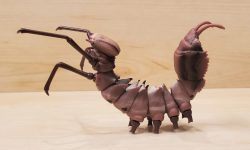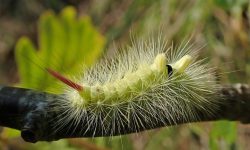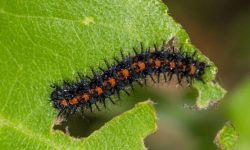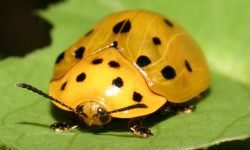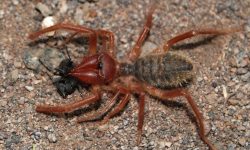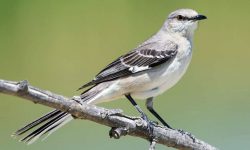When thinking of Tennessee, most people conjure up images of vast fields, lively country music concerts, or even the mystical beauty of the Appalachian Mountains. However, it is also home to small yet haunting creatures: spiders.
Spanning across the state of Tennessee, the lives of these spiders paint a diverse and intriguing picture of survival and biodiversity.
Different Types of Spiders in Tennessee
Furrow Orbweaver
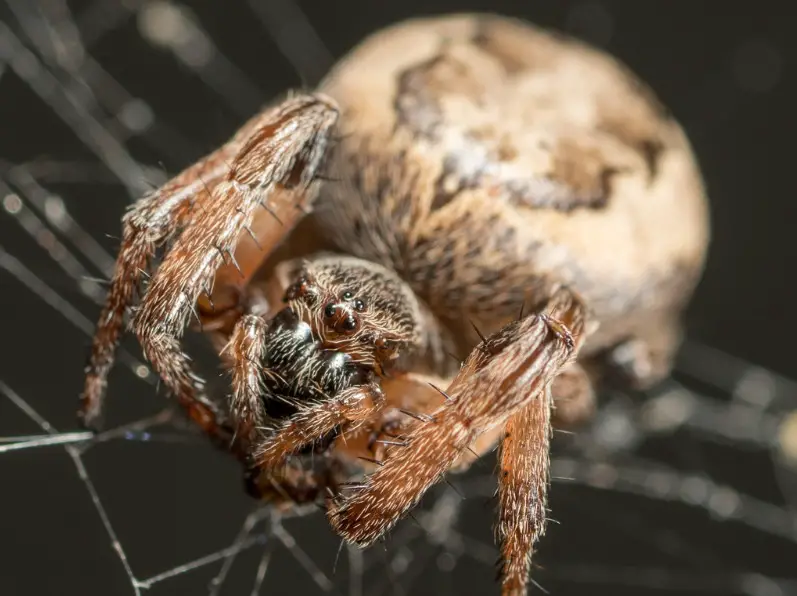
The Furrow Orbweaver, scientifically termed Larinioides cornutus, is identifiable by its oval abdomen and comes in various hues, including black and grey, with some displaying arrow-like markings on their abdomens.
Preferring moist habitats, it’s commonly found near water sources and often inhabits human-made structures like porches in significant numbers. This spider constructs its web at ground level, typically amidst grass, to ensnare prey, and is primarily active during the night.
Brown Recluse
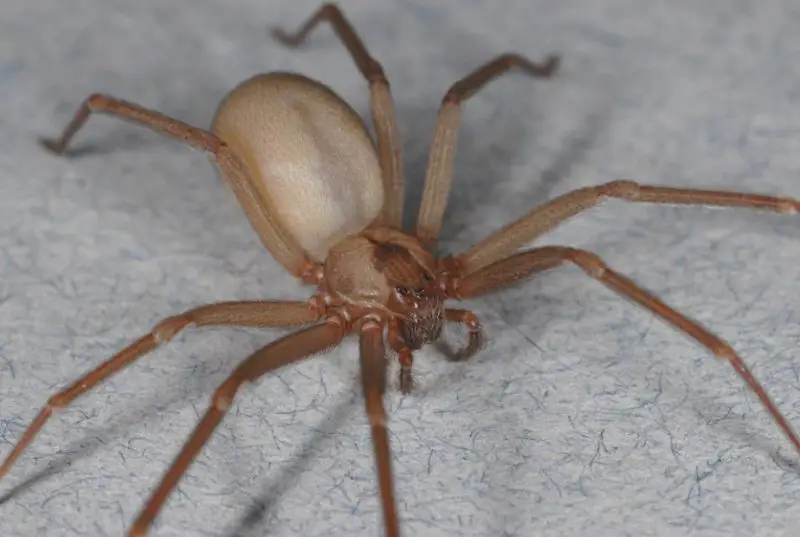
The Brown Recluse, scientifically named Loxosceles reclusa, is aptly named for its reclusive nature and distinctive violin-shaped marking on its cephalothorax. Identifying this species involves examining its six eyes arranged in pairs, a unique trait among spiders.
Notably, it’s one of the few spiders on the list known for its potentially harmful bite to humans. Constructing irregular webs in secluded areas like garages, it shuns human activity.
Despite efforts to control their population, Brown Recluses display remarkable resilience, surviving extended periods without food or water, posing challenges for eradication efforts.
Green Lynx Spider
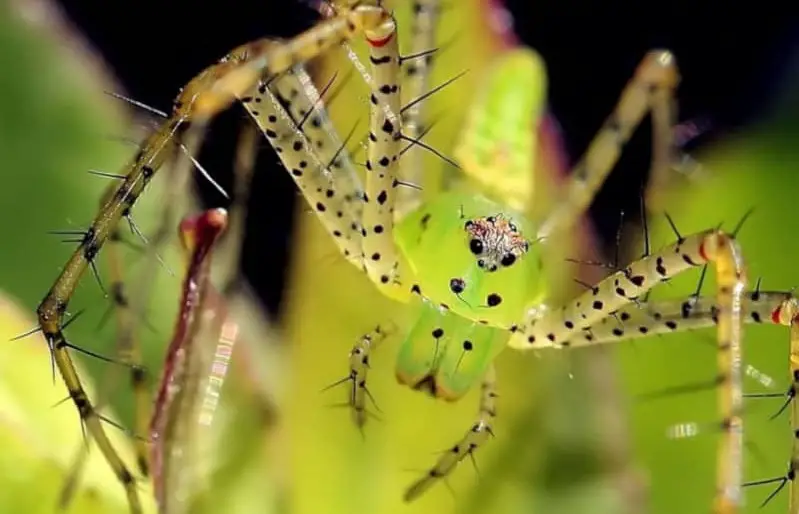
The Green Lynx Spider, scientifically known as Peucetia viridans, stands out with its vibrant green hue, often blending seamlessly into green shrub plants where it’s commonly found. Its all-green body and legs make it inconspicuous amidst foliage.
Despite its camouflage, it serves a valuable role in agriculture, particularly in controlling moth populations, making it beneficial in the cotton industry.
While the largest among Oxyopidae species, it poses minimal threat to humans despite its ability to bite, with its venom causing discomfort but rarely posing a life-threatening risk.
Common House Spider
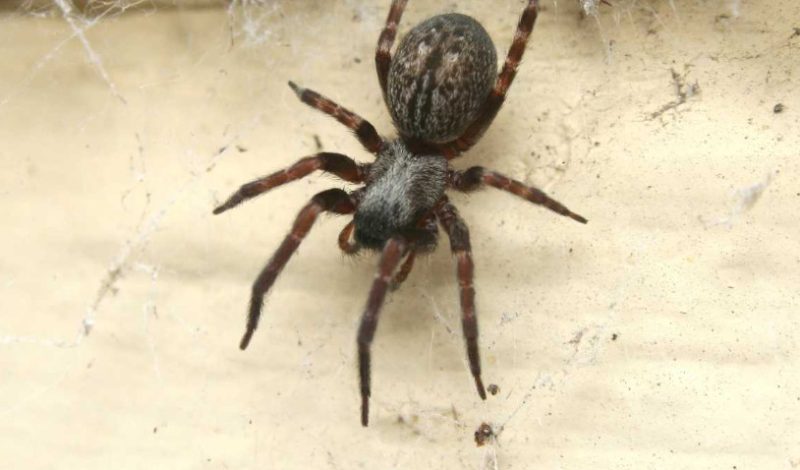
The Common House Spider, scientifically labeled Parasteatoda tepidariorum, is a familiar sight in human dwellings, often found near human activity. Targeting household pests like insects and mosquitoes, it plays a beneficial role in pest control.
Relatively small in size, females reach up to 4.7 mm while males are slightly smaller at 3.8 mm. Displaying various hues from brown to black, they often share webs, with both male and female occupants. Females may assert dominance through territorial fights with other females, showcasing their social dynamics within their habitat.
American Nursery Web Spider
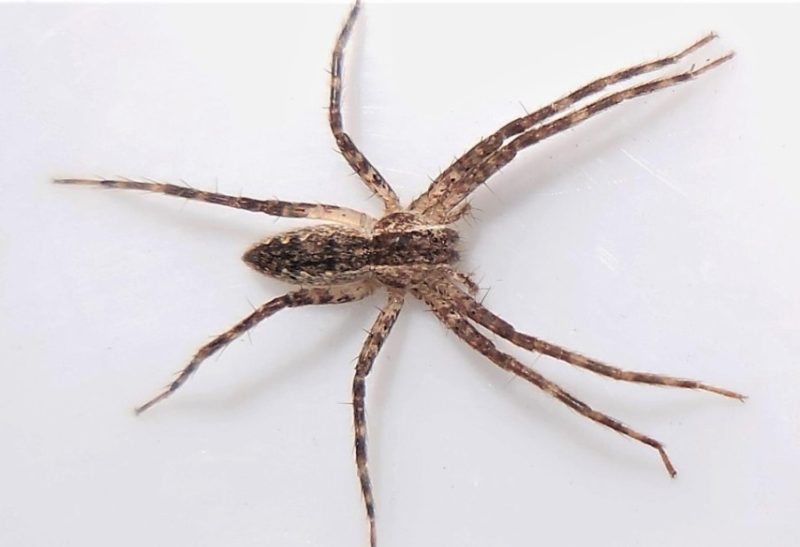
The American Nursery Web Spider, scientifically termed Pisaurina mira, belongs to the Pisauridae family and is commonly found in woodlands and meadows. It’s recognized as an active hunter, preying on gnats and mosquitoes. Notably, it’s infamous for its radical or cannibalistic mating behavior.
The male, smaller than the female, employs silk to immobilize the female’s legs before mating, reducing the risk of being attacked. While its venom is potent against small insects, it poses minimal danger to humans, lacking the potency to cause harm.
Spined Micrathena
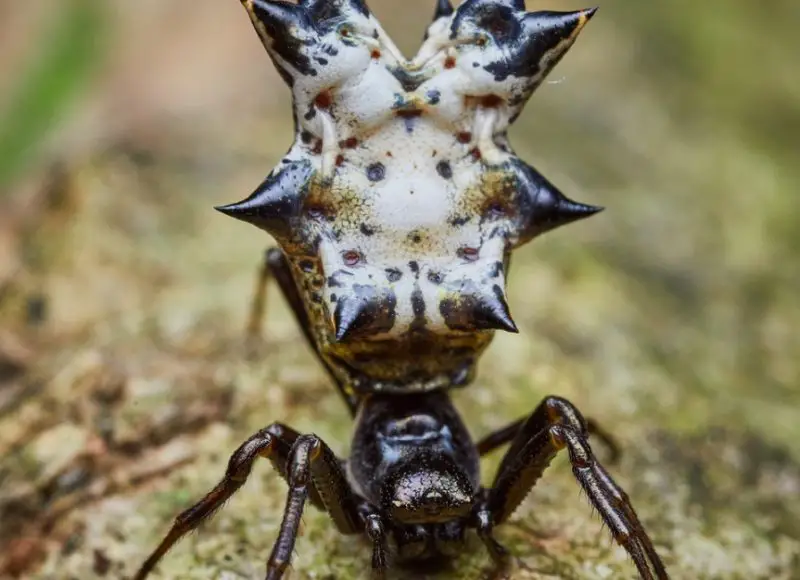
The Spined Micrathena, scientifically named Micrathena gracilis, is commonly found in oak forests, distinguished by its unique appearance, particularly in females, who are more frequently encountered than males. Sporting white and black coloration with a body adorned with distinctive spikes, females are relatively small compared to other Tennessee spiders but can weave webs up to 7 inches in diameter.
Known for its nomadic behavior, this spider rarely stays on the same web for more than a week, traversing its woodland habitat extensively. Living up to a year, it undergoes dormancy in winter, with females laying eggs in humid woodland areas.
Rabid Wolf Spider
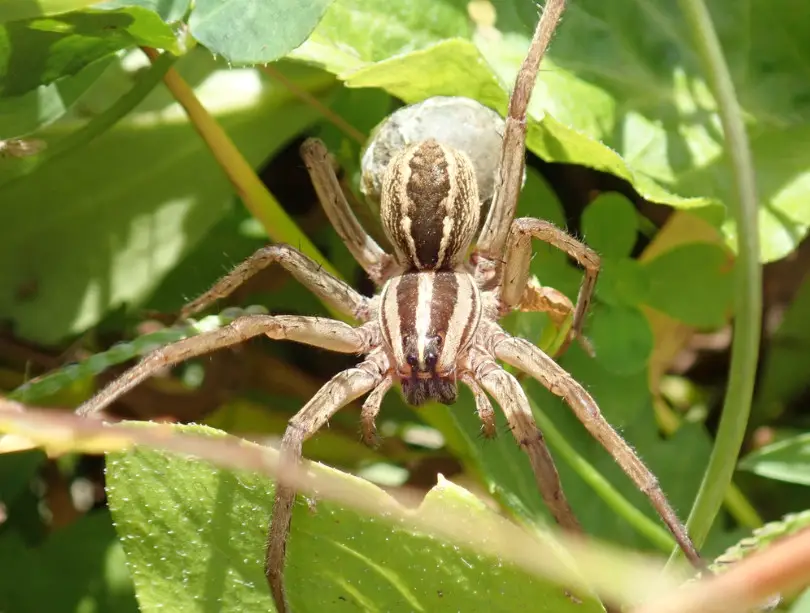
The Rabid Wolf Spider, scientifically termed Rabidosa rabida, is a striped member of the Lycosidae family, commonly encountered in both state and nationwide. While its bite poses minimal threat to humans, its affinity for populated areas, particularly around garbage, often brings it into contact with humans.
With a lifespan averaging around 2 years, it sustains itself by consuming a variety of insects, including ants, crickets, and grasshoppers. Remarkably adaptable, it fearlessly confronts larger insects and animals.
Long-Bodied Cellar Spider
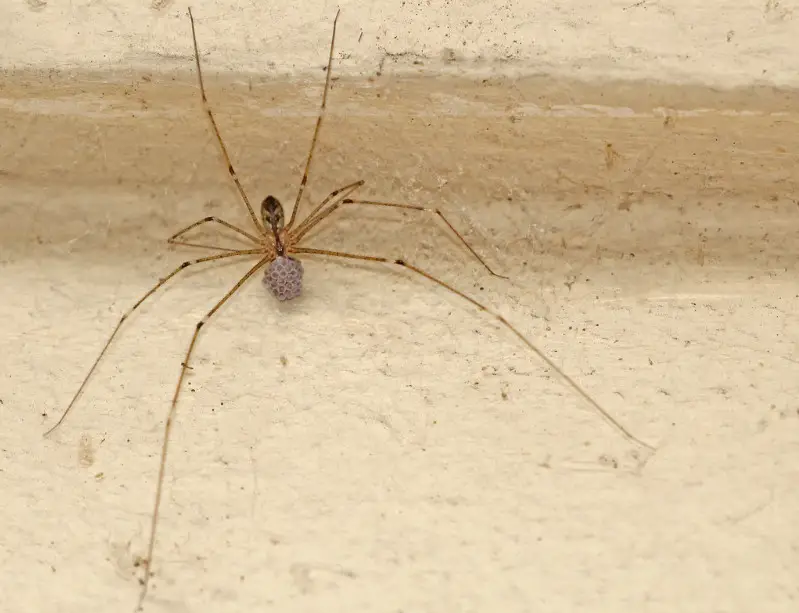
The Long-Bodied Cellar Spider, also known as Pholcus phalangioides or Daddy Longlegs Spider, is easily distinguished by its exceptionally long legs, which can be several times longer than its body. Typically found in cold, damp environments like basements, it spends the majority of its life in these locales or near homes.
While harmless to humans, it poses a threat to other spider species, including those that are venomous, through its predatory behavior. Its silk is currently under extensive study for potential applications in health and medicine.
Golden Jumping Spider
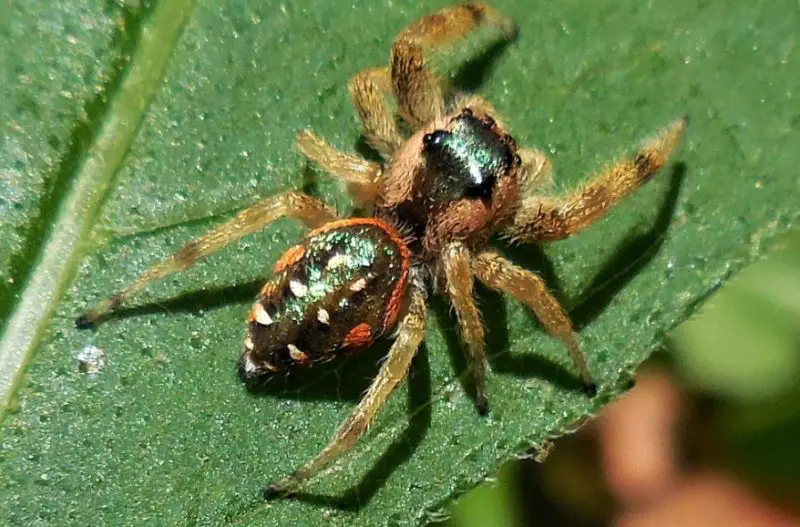
The Golden Jumping Spider, scientifically known as Paraphidippus aurantius or emerald jumping spider, belongs to the Salticidae family. With excellent vision, its vivid orange and green coloring aids in efficient prey hunting, allowing it to accurately anticipate and target its quarry during leaps.
Frequently spotted around homes, it actively hunts insects but tends to avoid contact with humans or large animals, preferring to conceal itself. Despite its proximity to human habitation, it generally shies away from confrontation, opting for evasion over confrontation.
Southern Black Widow
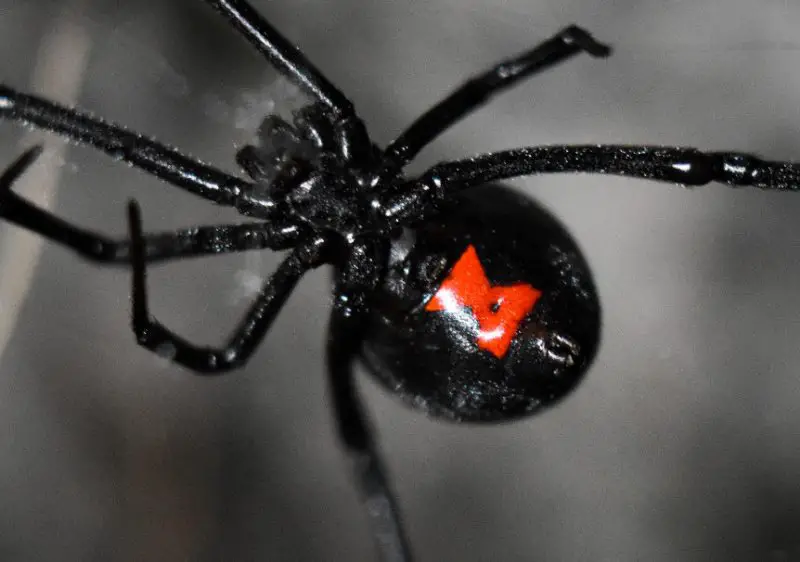
The Southern Black Widow, scientifically termed Latrodectus mactans or simply black widow, is a venomous spider known for its potentially lethal bite. Named for its notorious habit of consuming its male partner after mating, this arachnid poses a threat to both humans and male black widow spiders.
While its bite is typically not fatal, it can result in severe health complications requiring wound treatment or antivenin shots. Symptoms may include headaches, necessitating hospitalization. Precautions such as wearing gloves during gardening help mitigate the risk of bites, as these spiders often hide under rocks and ground-level objects.
Arrow-Shaped Orbweaver
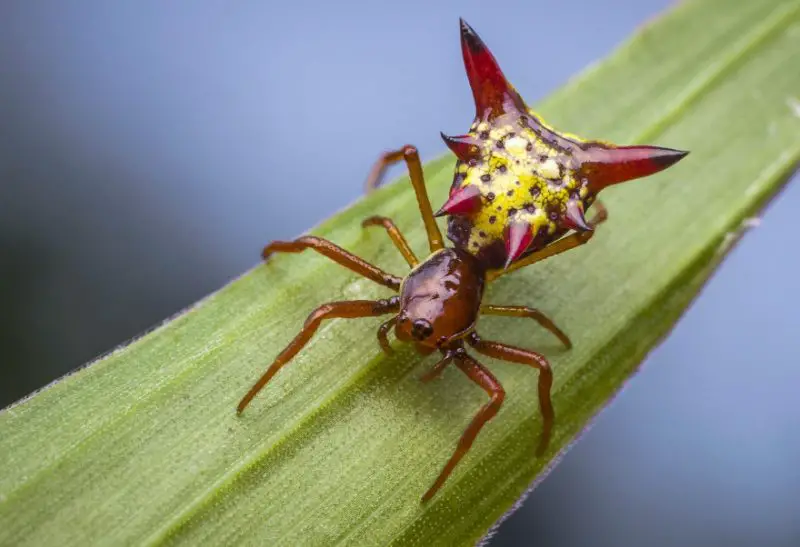
The Arrow-Shaped Orbweaver, scientifically named Micrathena sagittata or arrow-shaped micrathena, is a member of the Araneidae family. Recognizable by its distinctive arrow-shaped body, it boasts red legs and a bright yellow body, making it easily identifiable.
Often observed on its web, particularly the females, it frequents gardens and forests, favoring these natural settings to construct its spiral wheel-shaped webs.
Thin-Legged Wolf Spiders
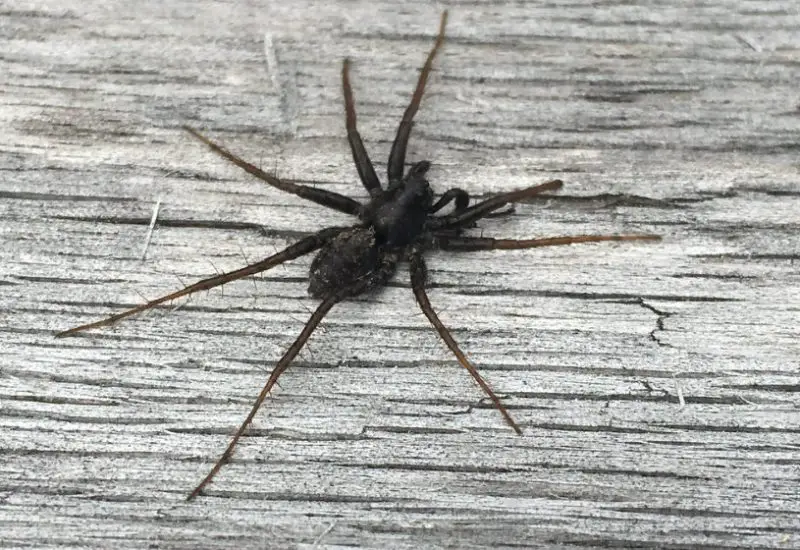
The Thin-Legged Wolf Spiders, classified under the genus Pardosa, are identifiable by their elongated legs and preference for humid habitats. Typically found near water sources, they sport distinctive black and gray stripes on both abdomen and carapace. Unlike web-building spiders, Thin-Legged Wolf Spiders rely on active hunting, traversing their environment in search of prey.
They exhibit both diurnal and nocturnal hunting behaviors, making them adaptable predators that efficiently hunt insects throughout the day and night.
Tigrosa Annexa
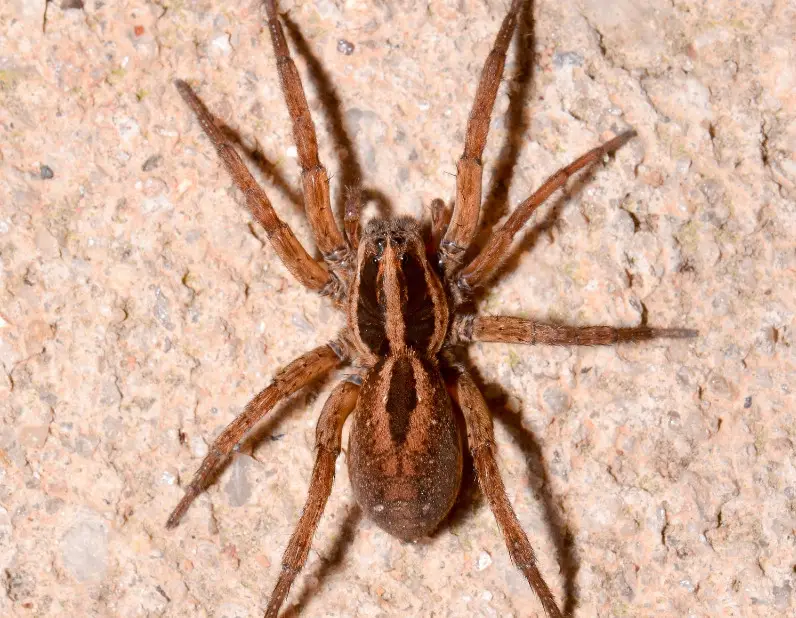
The Tigrosa annexa, a species of Wolf spider, stands out with its predominantly black, brown, and tan coloration, along with a long carapace and sturdy legs. Frequently observed in areas with human presence, it displays heightened activity levels during spring, particularly in April, unlike other spiders that peak in the summer.
These distinctive traits and seasonal behaviors aid in recognizing and understanding the habits of the Tigrosa annexa in its habitat.
Marbled Orbweaver
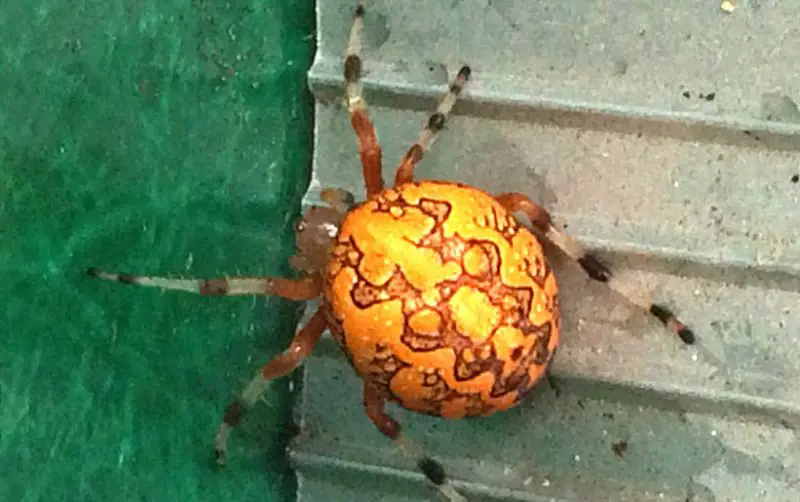
The Marbled Orbweaver, scientifically termed Araneus marmoreus or pumpkin spider, is among the largest Araneidae spiders, with females reaching sizes up to 18mm. Distinguished by its marbled carapace and vibrant orange-red head, it easily catches the eye in its habitat. Known for their daily web-building habits, females are responsible for maintaining and monitoring their webs for prey.
These spiders, like others in the Araneidae family, are most active during the warmer months of summer and fall.
White-Jawed Jumping Spider
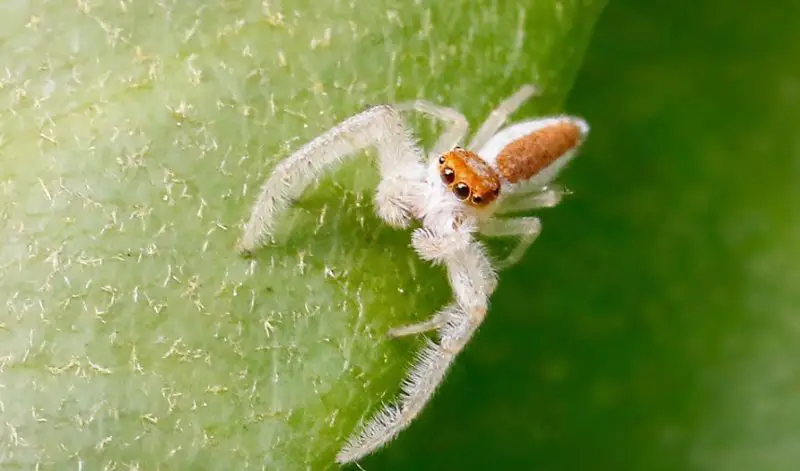
The White-Jawed Jumping Spider, scientifically termed Hentzia mitrata, is identifiable by its white-yellow coloration. Females of this species are larger than males and typically exhibit a paler coloration. With hairy legs and a preference for water sources, this spider is elusive, often roaming in search of prey rather than remaining stationary.
Its nomadic behavior and distinct coloration make it a notable presence in its habitat, particularly around water sources where it hunts.
American Green Crab Spider
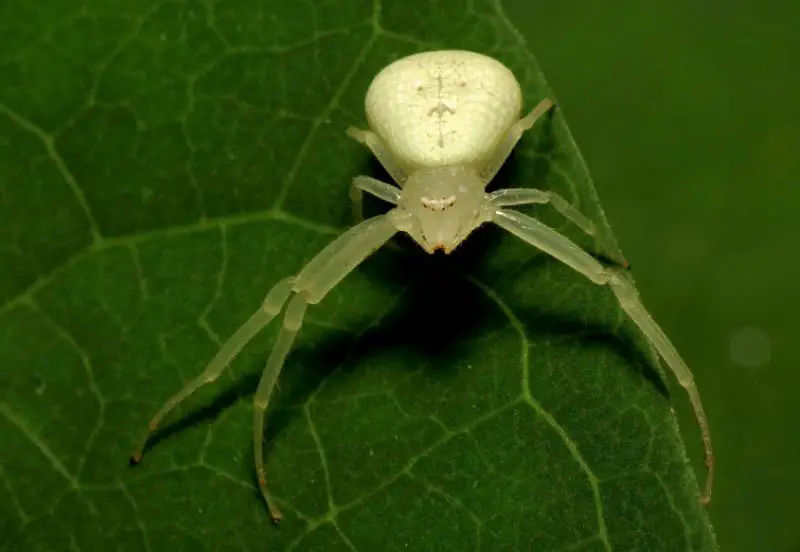
The American Green Crab Spider, scientifically named Misumessus oblongus, earns its name from its crab-like appearance, with legs splayed to the sides, enabling omnidirectional movement. Its standout feature is its vibrant neon-green color, ideal for camouflage among plants and shrubs where it hides on green leaves.
This coloration aids in ambushing prey, such as bees and pollen-seeking insects, by remaining undetected. Females may also exhibit maternal behavior, showing interest in their eggs, often kept nearby for protection.
Triangulate Combfoot
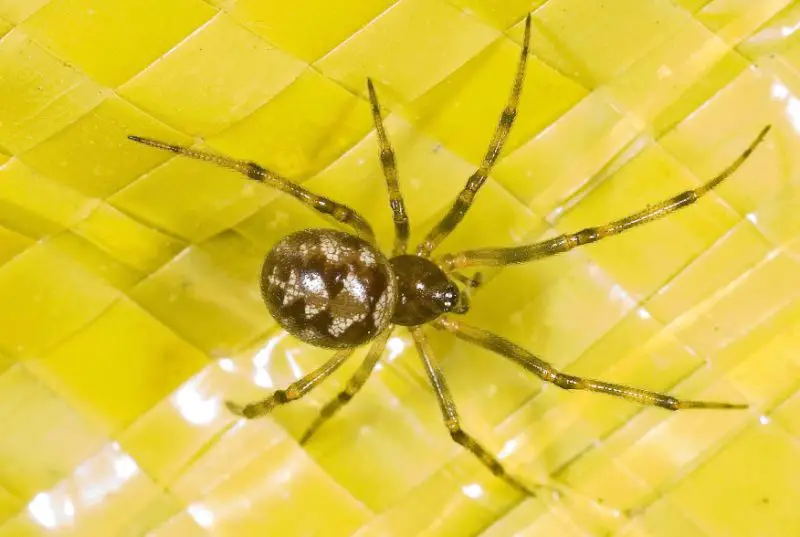
The Triangulate Combfoot, scientifically named Steatoda triangulosa or triangulate cobweb spider, is a member of the Steatoda genus. Known for preying on both spiders and insects like ants and ticks, it’s notable for hunting even dangerous species like the Brown recluse. Dependent on vibrations due to poor visibility, it weaves silk webs for catching prey.
Likely introduced to Tennessee by travelers, it’s believed to originate from other continents.
Magnolia Green Jumping Spider
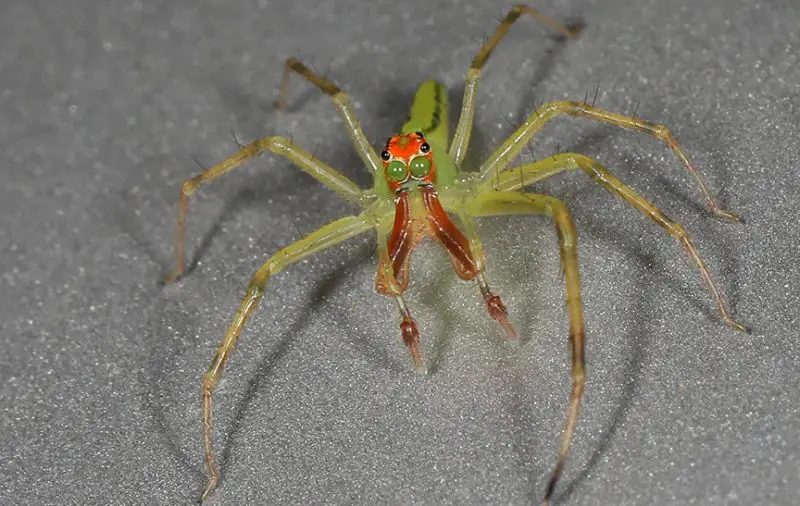
The Magnolia Green Jumping Spider, scientifically named Lyssomanes viridis, derives its name from its habitat preference for magnolia trees. Their green coloration provides effective camouflage against the leaves, aiding in stealthy hunting of prey like aphids, ants, and other insects, as well as occasional predation on other spiders.
Known for their agility, they can leap distances equivalent to 3-4 times their size. Females exhibit protective behavior, laying eggs beneath green leaves for added safety.
Putnam’s Jumping Spider
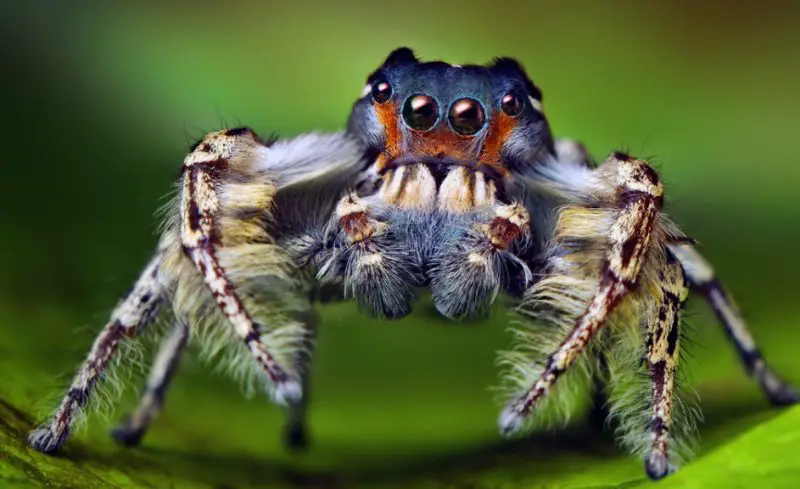
Putnam’s Jumping Spider, scientifically labeled Phidippus putnami, is a hairy and agile arachnid capable of leaping up to 5 times its body length with short legs. When attacking prey, it shoots silk to ensnare insects, preventing their escape.
Typically found on leaves in natural settings, it prefers curled leaves for security and ambush opportunities. While not harmful to humans, it exhibits remarkable predatory behavior, showcasing its effectiveness as a hunter in its habitat.
Banded Fishing Spider
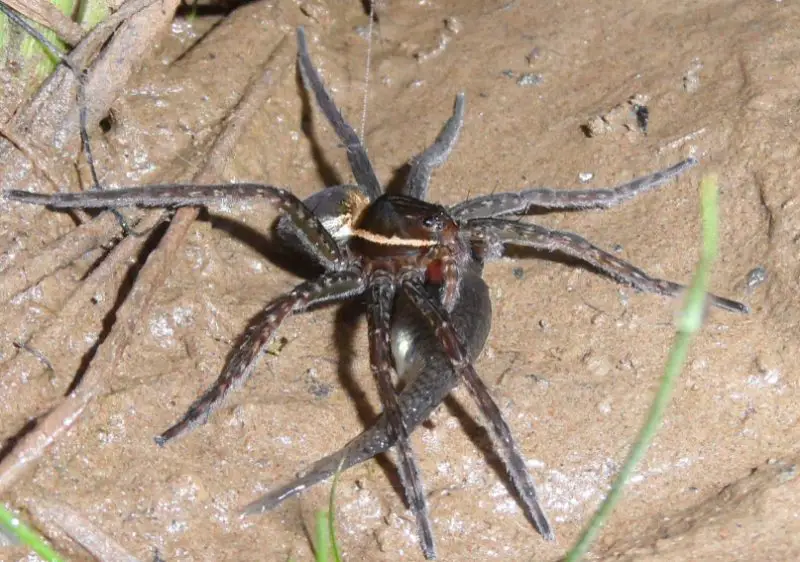
The Banded Fishing Spider, scientifically known as Dolomedes vittatus, is a sizable arachnid commonly found near water bodies. Equipped with short, water-repellent hairs, it can float on the water’s surface while hunting for prey. Despite their intimidating size, they pose no significant threat to humans.
They exhibit versatility in prey selection, targeting small fish and water insects. Despite their large size, they remain agile, underscoring their adaptability and effectiveness as hunters in aquatic environments.
White-Banded Fishing Spider
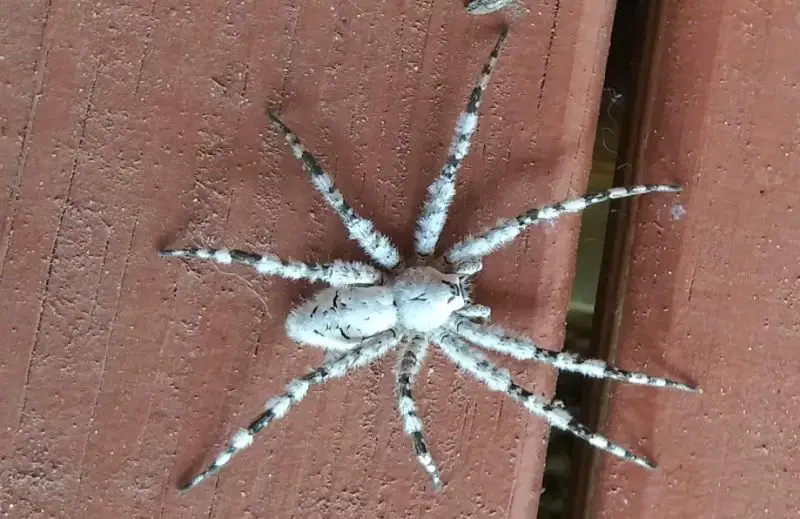
The White-Banded Fishing Spider, scientifically termed Dolomedes albineus, is a member of the Dolomedes genus commonly found near water sources. Sporting white and brown hues on their bodies and legs, some may exhibit a green coloration.
While reaching a size of up to 23 mm in females, they pose no danger to humans despite their intimidating appearance.
Basilica Orbweaver
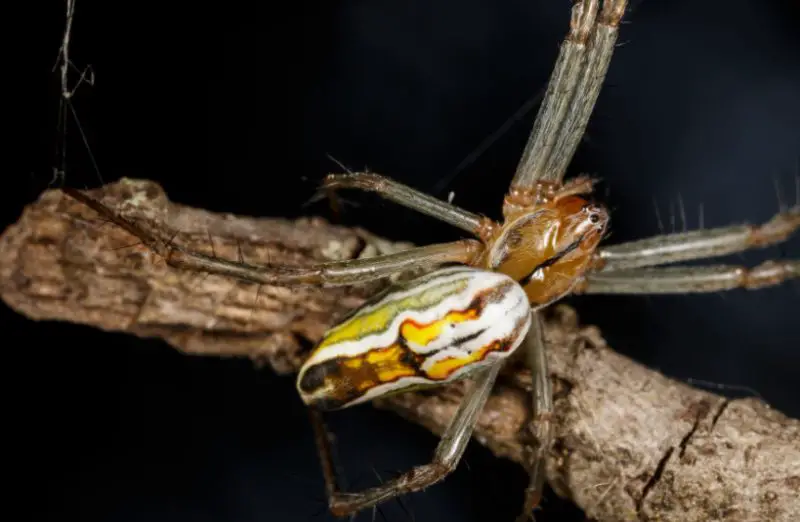
The Basilica Orbweaver, scientifically named Mecynogea lemniscata, is easily recognizable in nature due to its distinct appearance. With a long body adorned with yellow, white, and green stripes, it stands out amidst garden or meadow foliage.
Its name is derived from cathedral domes, reflecting the shape of its intricate web. Despite its small size, reaching up to 9mm, its rainbow of stripes and vibrant colors make it a striking presence in its habitat.
Black-Tailed Red Sheetweaver
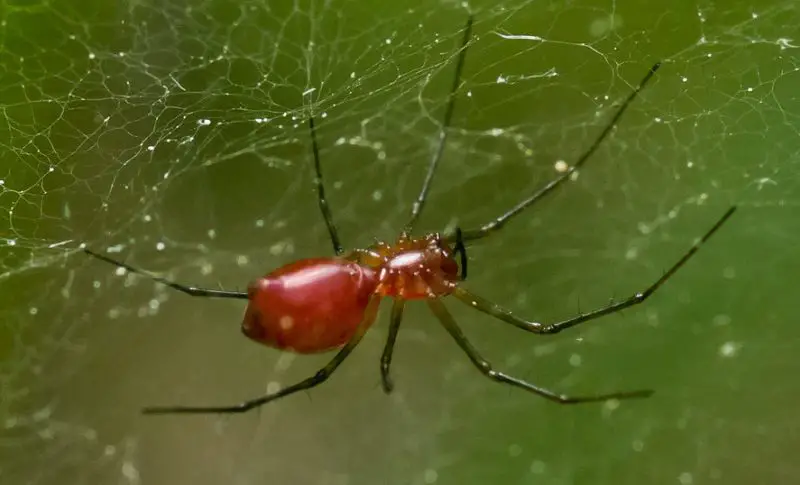
The Black-Tailed Red Sheetweaver, scientifically termed Florinda coccinea or red grass spider, belongs to the Linyphiidae family and is often mistaken for red ants due to its red coloration. Notably, males and females are similar in size, with females slightly larger.
They construct threads and sheets to capture prey like flies, showcasing intricate mating behaviors where males cautiously approach females. Despite being less recognizable, their vibrant color and complex behaviors make them fascinating inhabitants of their ecosystems.
Six-Spotted Fishing Spider
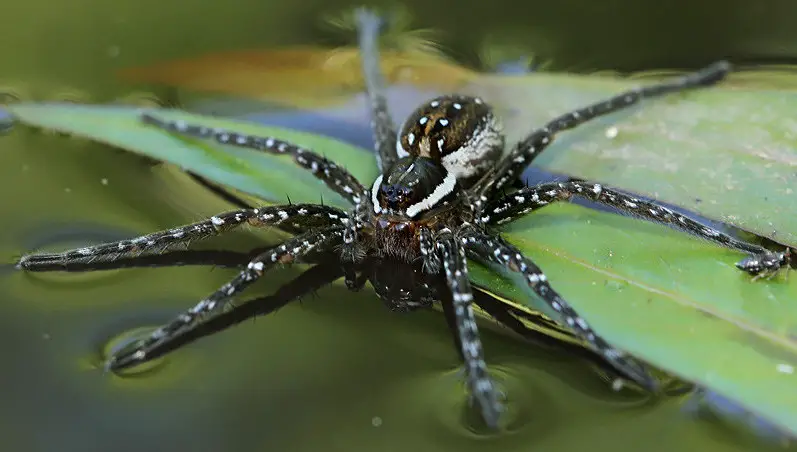
The Six-Spotted Fishing Spider, scientifically known as Dolomedes triton or dock spider, thrives near water bodies, displaying remarkable determination in hunting prey. Often seen skimming the water’s surface, they create concentric waves to pinpoint their target, typically larvae, and occasionally small fish, diving deep into the water if needed.
These voracious predators consume several times their body weight daily and are active exclusively during daylight hours.
Yellow Garden Spider
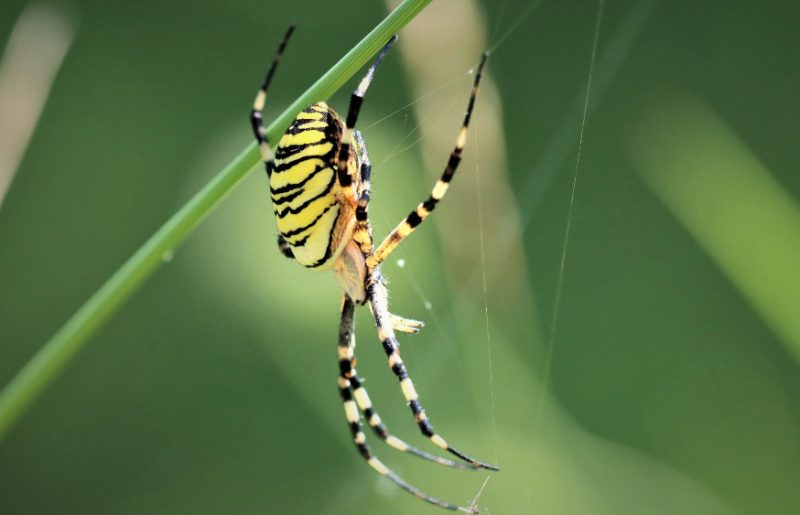
The Yellow Garden Spider, scientifically known as Argiope aurantia, is a common sight in gardens across Tennessee and the US. Its distinct black and yellow coloration makes it easily recognizable. Females, larger and more vibrant than males, are known for weaving large circular webs, while males weave smaller zigzag patterns nearby.
Despite its venom, this spider poses no threat to humans, using its toxin solely to immobilize small insects like flies and bees caught in its web. Its various common names include yellow garden spider, black and yellow garden spider, golden garden spider, and more.
Orchard Orbweaver
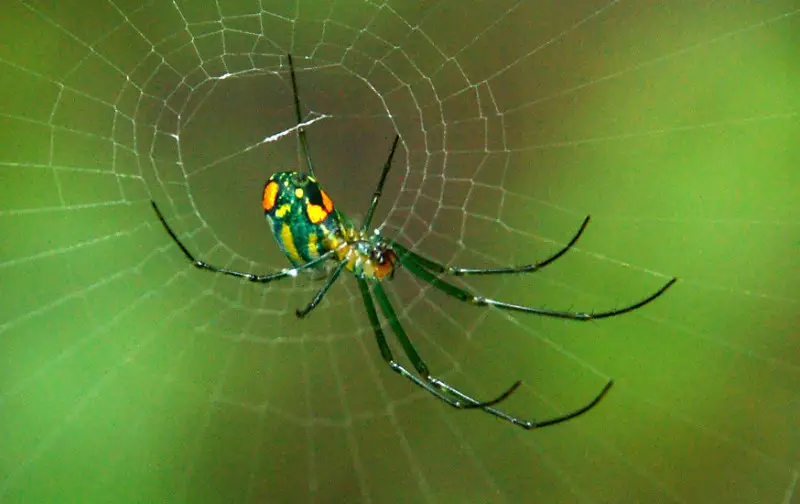
The Orchard Orbweaver, scientifically known as Leucauge venusta, is a common sight in orchards, as its name suggests. Recognizable by its distinctive green legs and striped carapace, this orbweaver spins horizontal webs, with the spider often found hanging upside down at its center. While its venom is harmless to humans, this spider plays a vital role in controlling insect populations.
Typically, females are larger, measuring up to 7.5mm, while males are smaller, reaching only about 4mm in size. Despite variations in coloration, their size remains relatively consistent compared to other orbweaver species.
Spotted Orbweaver
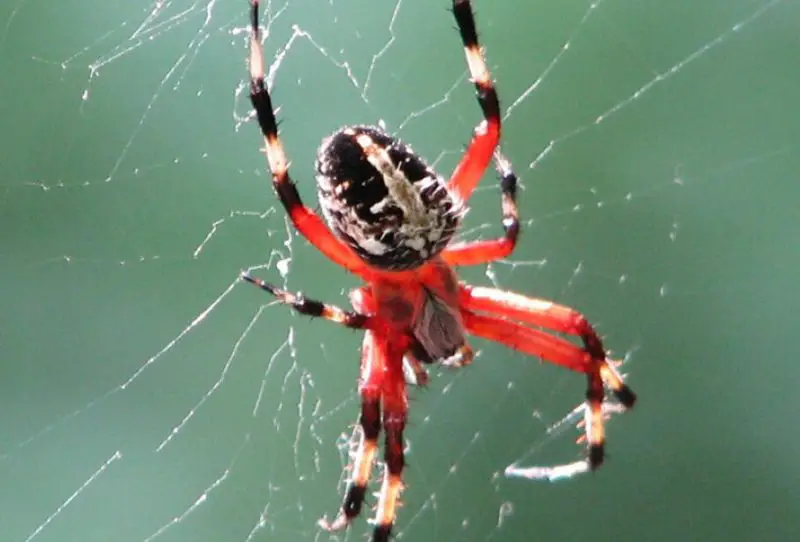
The Spotted Orbweaver, scientifically named Neoscona crucifera or commonly known as the Hentz orbweaver or barn spider, is frequently found in gardens and woodlands. Its striking feature is its red legs, making it easily identifiable.
These nocturnal spiders typically hide at the edge of their webs, which can stretch up to 2 feet in diameter during the day. Active mainly in summer, female Spotted Orbweavers can still be spotted in autumn, contributing to the diverse ecosystem of their habitats.
Tan Jumping Spider
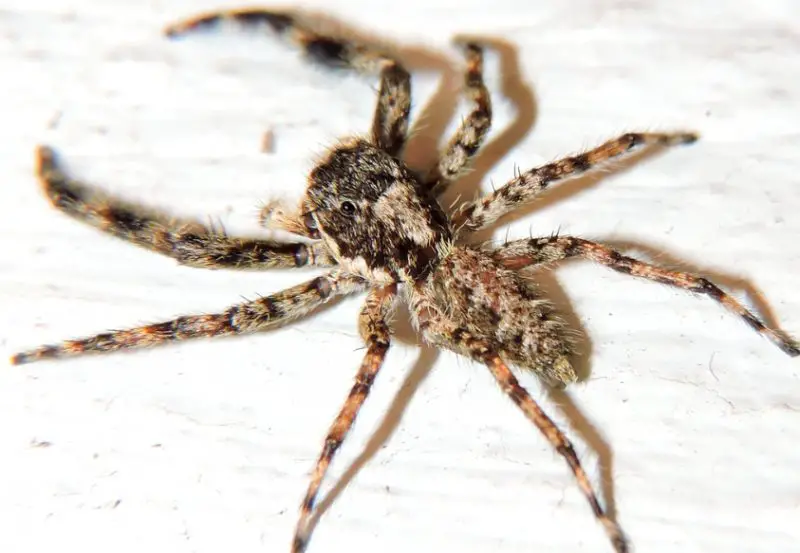
The Tan Jumping Spider, scientifically known as Platycryptus undatus, is a fascinating arachnid renowned for its agile hunting techniques. Sporting a hairy brown coat, it’s one of the more approachable spider species for humans. However, its friendly demeanor shifts dramatically when it comes to hunting prey.
Equipped with exceptional vision, it can leap up to five times its body length, surprising unsuspecting insects. Employing a combination of tactics, including shooting silk and direct ambush jumps, it efficiently immobilizes its prey, showcasing its prowess as a skilled predator in the intricate web of nature.
Bold Jumping Spider
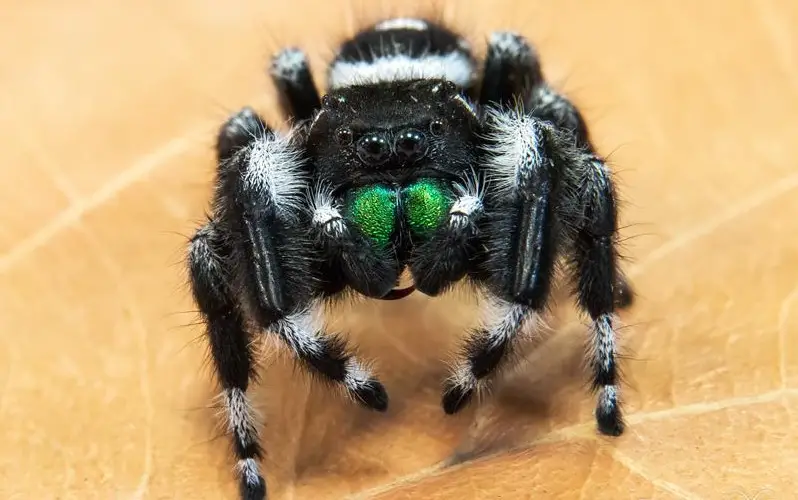
The Bold Jumping Spider, scientifically termed Phidippus audax, earns its moniker for both its daring nature and its distinctive appearance. Recognizing this species can be challenging due to its wide range of sizes and colors. Males typically measure around 8 mm, with some reaching up to 15 mm, while females are larger, averaging around 11 mm and sometimes reaching up to 18 mm.
Unlike many spiders, the Bold Jumping Spider doesn’t weave intricate webs for hunting. Instead, it relies on agile movements and impressive leaps to capture prey, though it may utilize webbing during mating to lay eggs.
Dark Fishing Spider
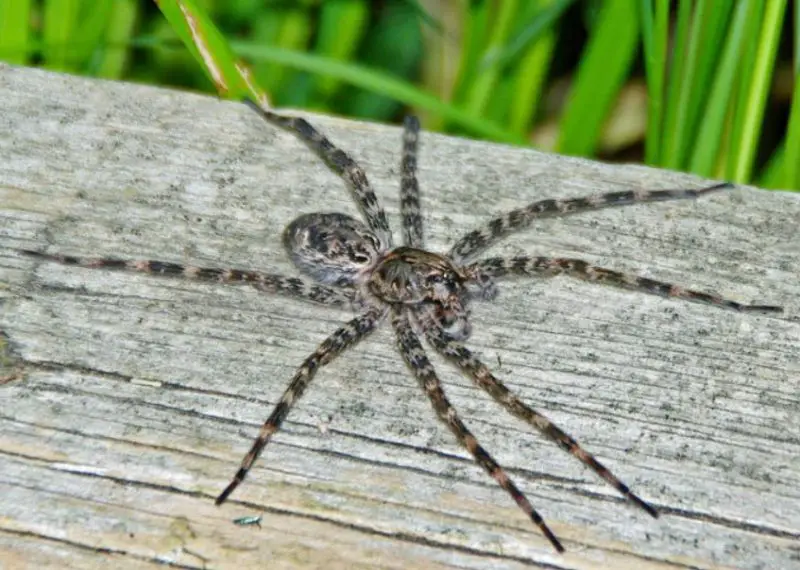
The Dark Fishing Spider, scientifically named Dolomedes tenebrosus, is a formidable arachnid found in close proximity to water bodies, earning its moniker from its hunting habits. With its prominent brown and black coloration, this spider’s sizable frame makes it easily discernible. Adult females typically range from 15 to 26 mm, while males are smaller, reaching around 13 mm.
Despite their imposing appearance, both genders of this spider are generally harmless to humans, with their bites often likened to a mild wasp sting, causing little to no severe health reactions.
Arrowhead Orbweaver
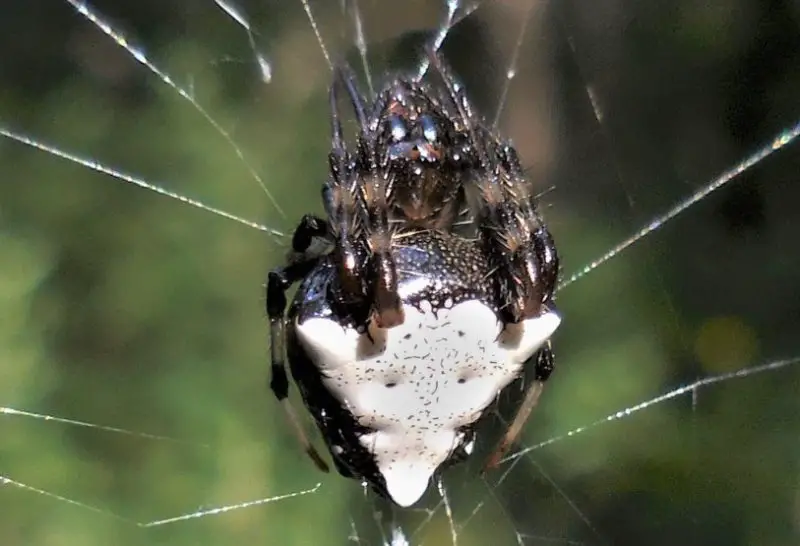
The Arrowhead Orbweaver, scientifically known as Verrucosa arenata, stands out as a rare and distinctive member of the orb-weaving spider family. Its unique triangular shape resembles the tip of an arrow, adorned with striking red coloration and a distinct yellow arrow-like abdomen.
Unlike typical orb-weavers, it adopts a distinct sitting position with its head raised, patiently awaiting prey. Employing venom to immobilize small insects, it efficiently captures its meals. Notably, males of this species are rarely sighted and are believed to lack the distinctive yellow arrow-like coloration on their abdomens, adding to their enigmatic allure.

